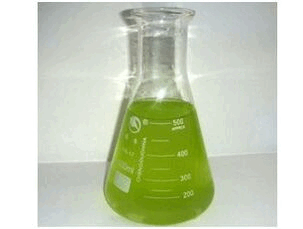PHYTOCHEMICAL ANALYSIS AND ESTIMATION OF ANTI OXIDANT POTENTIAL OF PHYTOSOMES FORMULATIONS OF MORINDA LUCIDA BENTH
Keywords:
Characterization, DPPH assay, Morinda lucida (L) Benth, phospholipids, phytosome, phytochemical analysisAbstract
Introduction: Lucid morinda (L) A medium-sized evergreen tree of the Morinda genus, the Benth (M. lucida, Rubiaceae) is a tropical West African rainforest plant that is also known as the Brimstone tree. In several West African nations, it is utilized in traditional medicine to cure a variety of human ailments. Phytosomes are freshly developed herbal formulations that have superior bioavailability and effects than traditional phyto molecules or botanical extracts because they are more readily absorbed. The goals of the current study were to evaluate ethanolic leaf extract of M. lucida's phytosomes, in vitro antioxidant properties, qualitative and quantitative phytochemical analyses, and phytosome formation.
Methods: The ethanolic plant extract and cholesterol-containing phospholipids were used to make the phytosome. The entrapment efficiency, particle size and size distribution, optical microscopic research, stability tests, and in vitro dissolution investigations were used to characterize phytosomes. Alkaloids, glycosides, sterols, phenols, terpenoids, tannins, and saponins were found by phytochemical examination.
Results: The ethanolic leaf extract of M. lucida contained 0.721 mg of total phenols and 0.464 mg of total alkaloids per 100 mg. Using industry-standard procedures, the ethanolic leaf extract's in vitro antioxidant activity was evaluated against the DPPH assay technique. Combining phospholipids and M. lucida can have a synergistic impact, which can be measured using the DPPH model for free radical scavenging activity. The optimised batch F10's particle size and entrapment efficiency were found to be 223.30±0.41 nm and 76.46±0.61 nm, respectively.
Conclusion: It can be employed as a targeted medicine delivery system in the future for applications such as liver, brain, heart, etc. protection. The use of novel approaches rather than traditional methods for delivering herbal drugs increases the bioavailability of polar extracts and boosts patient compliance.

Peer Review History:
Received: 7 October 2022; Revised: 13 November; Accepted: 24 December 2022, Available online: 15 January 2023
Academic Editor: Dr. Gehan Fawzy Abdel Raoof Kandeel , Pharmacognosy Department, National Research Centre, Dokki, 12622, Giza, Egypt, gehankandeel9@yahoo.com
, Pharmacognosy Department, National Research Centre, Dokki, 12622, Giza, Egypt, gehankandeel9@yahoo.com
Reviewers:
 Dr. George Zhu, Tehran University of Medical Sciences, Tehran, Iran, sansan4240732@163.com
Dr. George Zhu, Tehran University of Medical Sciences, Tehran, Iran, sansan4240732@163.com
 Dr. Hasniza Zaman Huri, University of Malaya Medical Centre, Kuala Lumpur, hasnizazh@ummc.edu.my
Dr. Hasniza Zaman Huri, University of Malaya Medical Centre, Kuala Lumpur, hasnizazh@ummc.edu.my
Downloads

Published
How to Cite
Issue
Section

This work is licensed under a Creative Commons Attribution-NonCommercial 4.0 International License.









 .
.